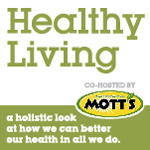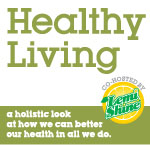
By Elise Jones, babybites blog editor and social media director
Water. It’s one of those must-haves to survive list. We actually need to drink it everyday to stay healthy. But it’s also one of those things that I’ve found has freaked me out since I’ve been trying to lead a cleaner, healthier life. I guess I have the New York Times to thank for that.
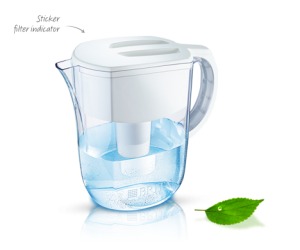 Perhaps the point where I became most aware the water I was drinking from the tap wasn’t up-to-snuff was when I saw my first Brita water pitcher. I bought into it before I became a mom and it resided permanently in my refrigerator. I only used it to clean my drinking water; tap water was used for cooking and cleaning fruits and vegetables.
Perhaps the point where I became most aware the water I was drinking from the tap wasn’t up-to-snuff was when I saw my first Brita water pitcher. I bought into it before I became a mom and it resided permanently in my refrigerator. I only used it to clean my drinking water; tap water was used for cooking and cleaning fruits and vegetables.
Then along came daughter number one and the idea of polluted or contaminated water and its effects on her began to creep into my consciousness. Lead, E.coli, mercury and microbial pathogens are all floating in the water and what happens when it gets into the system of my little one? I know there are some sensational stories in the news out there and I tend to take most of it with a grain of salt, but still, how did I know if my tap water was safe?
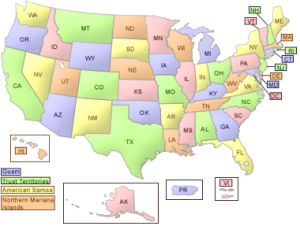 My first call to action was to check my local water supply via the Environmental Protection Agency (EPA). They have this cool graphic that is interactive and you can click on to learn more about your local water supply: water quality & conditions, water supply sources and water assessments are all analyzed. It’s a great starting point to find out just what is in your tap water.
My first call to action was to check my local water supply via the Environmental Protection Agency (EPA). They have this cool graphic that is interactive and you can click on to learn more about your local water supply: water quality & conditions, water supply sources and water assessments are all analyzed. It’s a great starting point to find out just what is in your tap water.
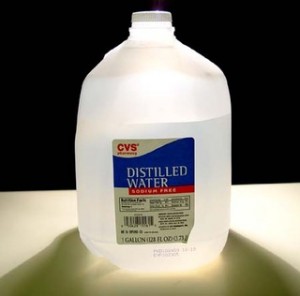
The next query I researched was based on my question that if there are so many contaminants in the tap water, why risk it? Why not just get distilled or purified water and drink that? Well as it turns out, that isn’t the best option either. Distilled/purified water is great for all sorts of things but a regular drinking water is NOT what it should be used for. Reason being, it takes out ALL minerals from water. The good nutrients found in our tap water help protect against nutritional deficiencies. Therefore if we don’t get it in our water, then we need to make up for the lack of those nutrients elsewhere and who are we kidding, upping our intake of calcium, magnesium and fluoride is no easy feat (don’t even begin to ask me what I can add to my diet to get MORE of those things!).
Another concern I had about my water had to do solely within my four walls: old pipes. It seems no matter how clean the water sent to my home through the city water system, if it comes out brown, it can’t be good. The brown sometimes seen in water is due to the corrosion of pipes. There seems to be a simple answer to this problem: flush your water for 30 seconds to 2 minutes before using it. You can also get your water tested for lead if you think it is a severe problem or just want to soothe your piece of mind.
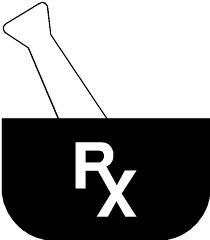 Last but not least is that ever present concern of what is put into our ground and sewage systems will somehow come back into our tap water. It’s no secret that many of us fret over the thought of prescription drugs being present in our drinking water and the debate on fracking and its effects on our water is a hot topic. The effects of long term exposure to these pollutants in our water has yet to be determined. One way I am making sure I minimize the risk of having these pollutants in my food supply (because of course most foods come into contact with water in some point of their creation) is by purchasing organic foods that are created free of hormones and antibiotics. I also make sure I’m not contributing to the problem by flushing unused medicines down my toilet and sinks. Most pharmacies will accept unused medicine and hopefully discard it in a safer manner.
Last but not least is that ever present concern of what is put into our ground and sewage systems will somehow come back into our tap water. It’s no secret that many of us fret over the thought of prescription drugs being present in our drinking water and the debate on fracking and its effects on our water is a hot topic. The effects of long term exposure to these pollutants in our water has yet to be determined. One way I am making sure I minimize the risk of having these pollutants in my food supply (because of course most foods come into contact with water in some point of their creation) is by purchasing organic foods that are created free of hormones and antibiotics. I also make sure I’m not contributing to the problem by flushing unused medicines down my toilet and sinks. Most pharmacies will accept unused medicine and hopefully discard it in a safer manner.
So water, it’s everywhere and it’s part of our everyday life. What questions do you have about water? Have you found healthier water?
_____________________________________________________
Like what you see? Here is another Green Parenting column:
_____________________________________________________

